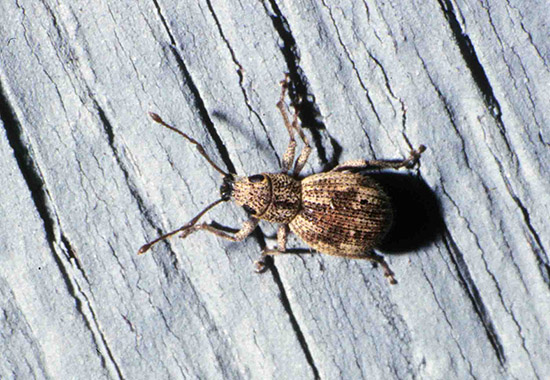Issue 11, July 28, 2014
Imported Longhorned Weevil
The imported longhorned weevil, Calomycterus setarius, has been numerous this summer. This pest is native to Japan and has been in this country since the 1920's. It is apparently controlled by natural enemies as noticeable populations occur infrequently. Adults feed on flowers, grass, shrubs, trees, and vines causing ragged edges on leaves and petals.
Adults have rounded, black, hard-shelled bodies, but they are covered with scales making them tan with irregular brown spots. They are about 3/16 inch long with the heads elongated into short snouts. Much of their feeding is done at night. Adults are commonly found hiding in blossoms or walking on walls. Adults are very long-lived and commonly enter houses to spend the winter.

Imported longhorned weevil adult.
Eggs are laid in sod, and the larvae feed on the fine roots of grasses and clovers as well as asters and goldenrod. This larval feeding is not associated with any significant host damage. Adults emerge in June and cause damage into October. They are controlled with sprays of carbaryl (Sevin) or pyrethroids. Avoid spraying blossoms to avoid bee and other pollinator injury. (Phil Nixon)
Author:
Phil Nixon